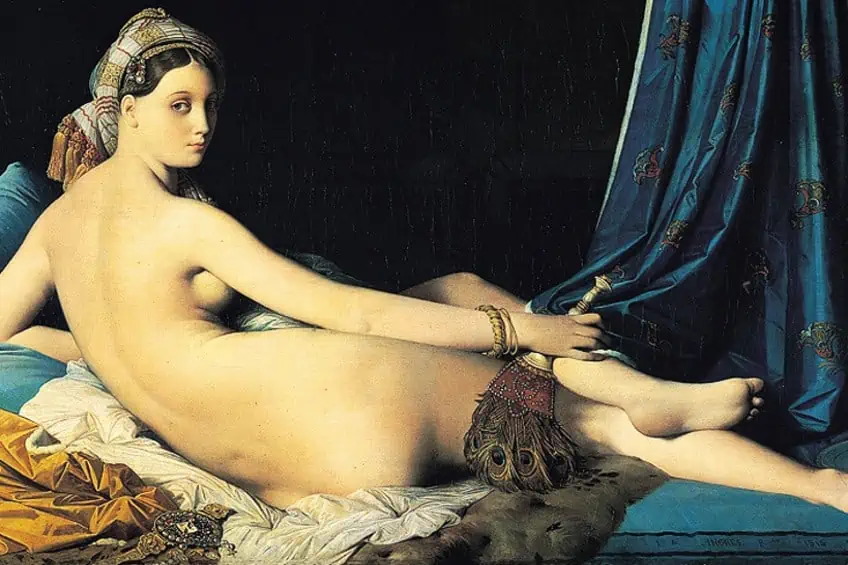“La Grande Odalisque” by Jean-Auguste-Dominique Ingres – Study
Jean-Auguste-Dominique Ingres was asked by Napoleon Bonaparte’s sister, Caroline, to produce the Neoclassicism masterpiece, the La Grande Odalisque painting, in 1814. Ingres, the most famous exponent of official French painting in the 19th century, had no issue distorting human bodies in order to preserve the appealing qualities of the line in his art. This is precisely what he did in this famous painting of a harem woman. Below, let’s discover all there is to know about La Grande Odalisque by Jean-Auguste-Dominique Ingres.
Understanding La Grande Odalisque by Jean-Auguste-Dominique Ingres
| Artist Name | Jean-Auguste-Dominique Ingres (1780 – 1867) |
| Date Completed | 1814 |
| Medium | Oil on canvas |
| Dimensions (cm) | 91 x 162 |
| Current Location | Louvre Museum, Paris, France |
When the artwork was first displayed at the Paris Salon, it was mocked; audiences claimed that her serpentine back had too many vertebrae to be anatomically correct and her strangely lengthened arm had no elbow to speak of. But Ingres was unconcerned by the idea of idealism, even to the extent of deformity, which prioritized the intention of a beautiful composition above all else. Ingres enthusiastically endorsed the principles of academic “official” painting, which attempted to represent the ideal while removing the flaws of reality from art.
Before we learn more about the La Grande Odalisque painting, let us learn a little more about its artist.
An Introduction to Jean-Auguste-Dominique Ingres (1780 – 1867)
| Artist Name | Jean-Auguste-Dominique Ingres |
| Nationality | French |
| Date of Birth | 29 August 1780 |
| Date of Death | 14 January 1867 |
| Place of Birth | Montauban, Tarn-et-Garonne, France |
Ingres was educated in the academic discipline of studying classical and nude art. He became an advocate of a rigorous classicism that clashed with Delacroix’s Romanticism. The artist rose to fame as a student at the Ecole des Beaux-Arts in Paris where he studied under Jacques-Louis David. In 1801, he obtained a scholarship to Rome, which he undertook five years later, and thanks to the influence of Italian art, he learned to master portraiture.
He also made small paintings for the French crown, portraying literary passages, events from the history of France, or artists’ lives. He subsequently returned home to France where he was appointed the French Academy’s Director.
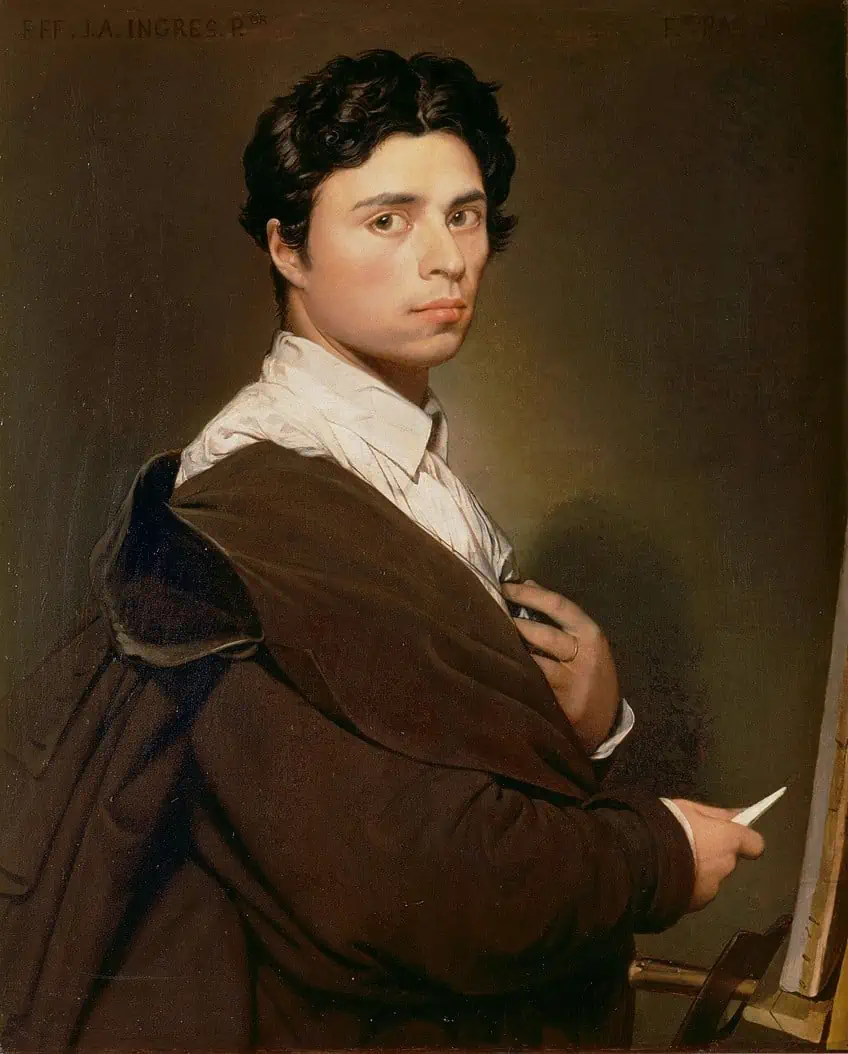
Teaching and administrative responsibilities dominated Ingres’ term as director of the Academy. He only produced three paintings during his six-year stay at the Academy. He established a teaching studio, which grew to become one of the biggest in all of Paris. By the mid-1840s, he had established himself as the most sought-after society portraitist in France. Although none of his numerous students achieved a level of distinction, his influence may be seen in the works of Pierre-Auguste Renoir, Edgar Degas, and Pablo Picasso.
Analysis of the La Grande Odalisque Painting
It was during his stay in Italy that he painted this artwork for the Queen of Naples. It portrays a young Turkish prostitute and is regarded as among the earliest instances of ‘Orientalism’ in the history of art, a word that refers to the West’s interest in the Muslim realm of the Near East and North Africa. Napoleon’s Egyptian expedition, which shared images and information about Egypt across Europe, influenced fashion and styles and Ingres’ artwork was part of the Orientalist craze. The exotic theme allowed the artist to create an appealing naked woman who was not a traditional goddess. The young woman, though, is more influenced by Western art history than by a real harem.
An odalisque was a lady kept in the harem of a sultan. The artist was well-known for his ability to portray his subjects’ social status by means of his paintings.
Art critics have consistently emphasized the contrast between the woman’s pose and her facial expression. From her expression, we can tell that the pose is for the benefit of the sultan and not her own pleasure. The increased pelvic length highlights the woman’s sensual appeal. The face, on the other hand, has been described as expressionless and indifferent. By lengthening Odalisque’s back, the artist may have been attempting to physically depict the gap between the woman’s role and her inner thoughts.
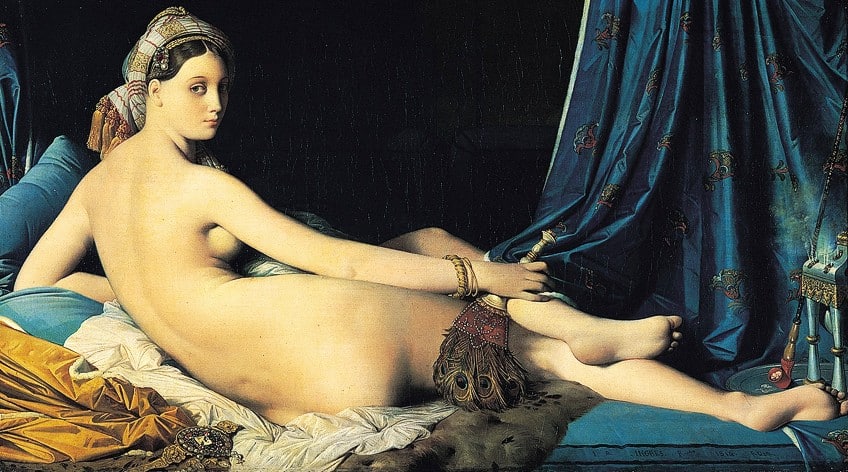
Her reclining Venus pose is reminiscent of several Baroque and Renaissance paintings, and her hairstyle and face appear European. Given her leisurely sensuality and the presence of an incense burner, hashish pipe, turban, and bejeweled fan, there is a feeling of elegance, a cultured idealism that borders on classicism. Ingres preferred precise brushwork and hard surfaces to artistic emotion or gestures in this work of art. He was a skilled colorist, and the glistening golds and blues contrast well with the woman’s light complexion, which appears as smooth as the luxurious materials on which she lies.
All of the surfaces in front of us have been painted with extraordinary tangibility, possibly not at all realistic, but displaying a sense of luxurious smoothness. Despite her strange and unrealistic proportions, she is still considered very beautiful, a symbol of the West’s sexual fantasy of the East.
Reception
Only after returning to Paris in 1824 did Ingres achieve critical acclaim. When this painting, which had sparked such outrage in 1819, was viewed again in 1846, it was instead met with admiration and critical approval. It is today considered important to Ingres’ notion of idealized beauty, although it was not universally admired.
Ingres’ work was described as “the perfect representation of an imperfect intelligence” by Delacroix, the head of the French Romanticists and Ingres’ main artistic rival. Ingres’ woman is a being that cannot be found in nature.

The excessive extension of her back – one reviewer notably said that she had three too many vertebrae – combined with her outrageously exaggerated buttocks and seemingly boneless and rubbery right arm form a creature that could only exist in Ingres’ sensual imagination. The woman’s tiny head and elongated limbs, along with the color scheme indicate inspiration from Mannerist artists like Parmigianino, whose painting of Madonna with an elongated neck was also renowned for its off anatomy.
Was the Woman in the La Grande Odalisque Painting Anatomically Correct?
Art critics agree that the artist stretched the figure’s back to add weight. Recently, a group of doctors decided to look at the painting to see if it was true that her spine was painted too long in the painting. They took measurements of the woman in the painting and compared them to those of real women. These women were positioned in a way that matched that of the Odalisque in the painting.
The influence of perspective had to be considered to guarantee a fair judgment. The woman in the painting’s head is in the middle ground of the artwork and hence seems smaller.
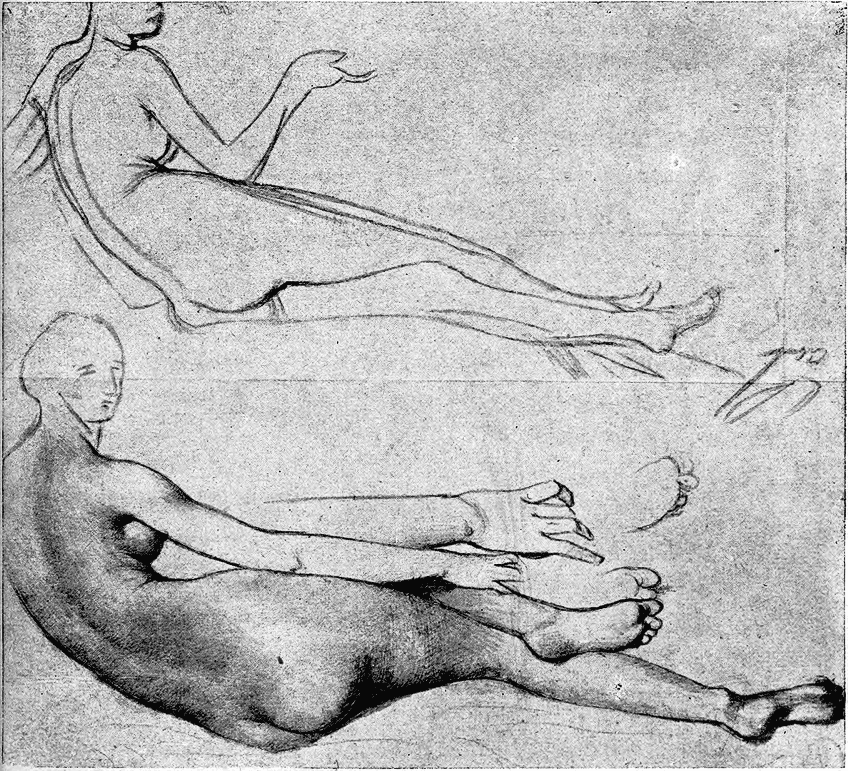
Considering the length of a normal woman’s spine, the Odalisque’s spine is actually five vertebrae bigger than the average, not three as had been suspected at the time the painting was produced. The figure distortion in Ingres’ artwork is related to a lateral curvature of the trunk and a tilt of the pelvis, which proved hard to replicate in the models used in the study. The extra length causes the head to seem to be farther away from the pelvis.
Legacy
By elongating and idealizing the body, this painting extended beyond the boundaries of traditional portrayals of the feminine form, and this new technique challenged traditional ideals of beauty in art. Ingres’ style, which was characterized by his use of detail and emphasis on line and contour, inspired other painters of the time, particularly those associated with the academic and Neoclassicism movements.
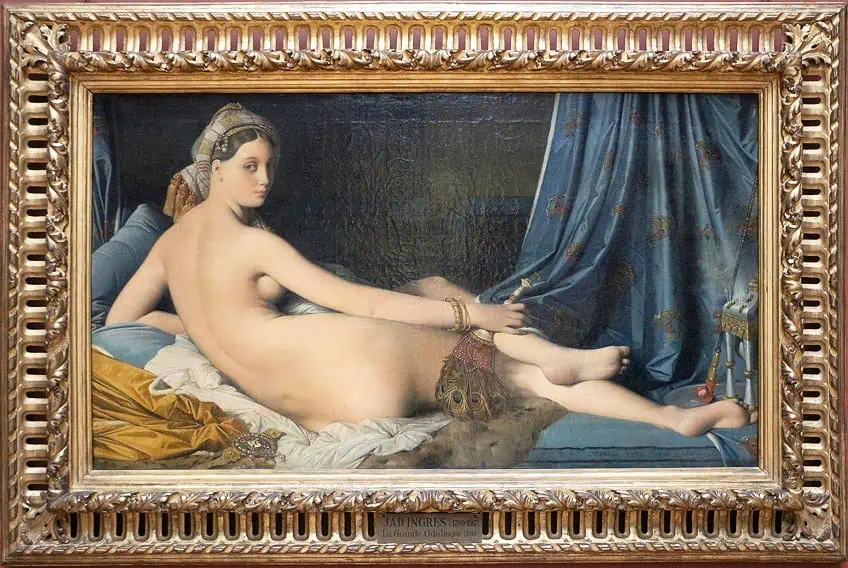
The La Grande Odalisque painting has been the focus of feminist criticism in the 20th and 21st centuries. Some believe that Ingres’ depiction of the feminine body objectifies and fetishizes it, promoting the masculine gaze in art. Others see it as a critique of Orientalist art’s exoticization of women.
That concludes our look at the La Grande Odalisque painting, a work renowned for both its beauty as well as its peculiar anatomy. Yet, these anatomical inaccuracies that the artist painted were intentional, because academic painting excellence and too exact colors didn’t enable the artist to express the sensation inspired by a curvaceous figure on the canvas. To him, the beauty of line was far more important than the accurate portrayal of anatomy. While the artwork was initially met with much derision, it received a much better response when exhibited again a few years later. Today, it is regarded as a Neoclassical masterpiece that is lauded by audiences and critics alike.
Frequently Asked Questions
What Is an Odalisque?
In the Ottoman Empire, as well as other Middle Eastern societies, an odalisque was a female member of a harem, which referred to an isolated location where the wives and servants of a nobleman lived. Odalisques served many responsibilities within the harem, including fulfilling the needs of their lord and doing various harem-related activities, such as cleaning. They were usually picked for their beauty and were even occasionally considered viable concubines for their master. Famous Western painters, such as Jean-Auguste-Dominique Ingres, who painted La Grande Odalisque, contributed to the glorified image of the odalisque.
What Is the La Grande Odalisque Painting About?
This painting features a woman lying in a harem with her back to the viewer. She is known as an odalisque and served certain duties for the harem’s master. This painting is specifically well-known due to the strange anatomical inaccuracies that can be observed on the woman’s body. For instance, her spine seems much longer than usual. Her one arm also seems elongated and doesn’t even appear to have an elbow. Despite these oddities, it is still regarded as an exceptionally beautiful painting due to the beauty of the line used and the luxurious portrayal of the fabrics on which she rests.
Jordan Anthony is a Cape Town-based film photographer, curator, and arts writer. She holds a Bachelor of Art in Fine Arts from the University of the Witwatersrand, Johannesburg, where she explored themes like healing, identity, dreams, and intuitive creation in her Contemporary art practice. Jordan has collaborated with various local art institutions, including the KZNSA Gallery in Durban, the Turbine Art Fair, and the Wits Art Museum. Her photography focuses on abstract color manipulations, portraiture, candid shots, and urban landscapes. She’s intrigued by philosophy, memory, and esotericism, drawing inspiration from Surrealism, Fluxus, and ancient civilizations, as well as childhood influences and found objects. Jordan is working for artfilemagazine since 2022 and writes blog posts about art history and photography.
Learn more about Jordan Anthony and about us.
Cite this Article
Jordan, Anthony, ““La Grande Odalisque” by Jean-Auguste-Dominique Ingres – Study.” artfilemagazine – Your Online Art Source. November 14, 2023. URL: https://artfilemagazine.com/la-grande-odalisque-by-jean-auguste-dominique-ingres/
Anthony, J. (2023, 14 November). “La Grande Odalisque” by Jean-Auguste-Dominique Ingres – Study. artfilemagazine – Your Online Art Source. https://artfilemagazine.com/la-grande-odalisque-by-jean-auguste-dominique-ingres/
Anthony, Jordan. ““La Grande Odalisque” by Jean-Auguste-Dominique Ingres – Study.” artfilemagazine – Your Online Art Source, November 14, 2023. https://artfilemagazine.com/la-grande-odalisque-by-jean-auguste-dominique-ingres/.


